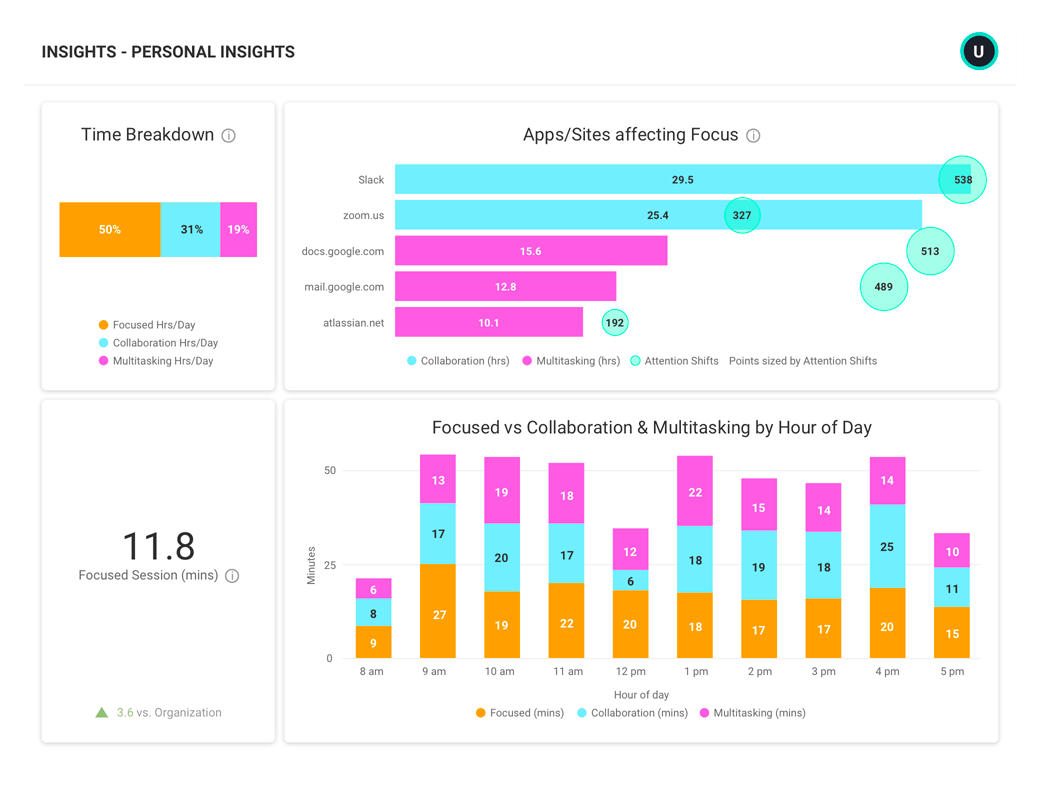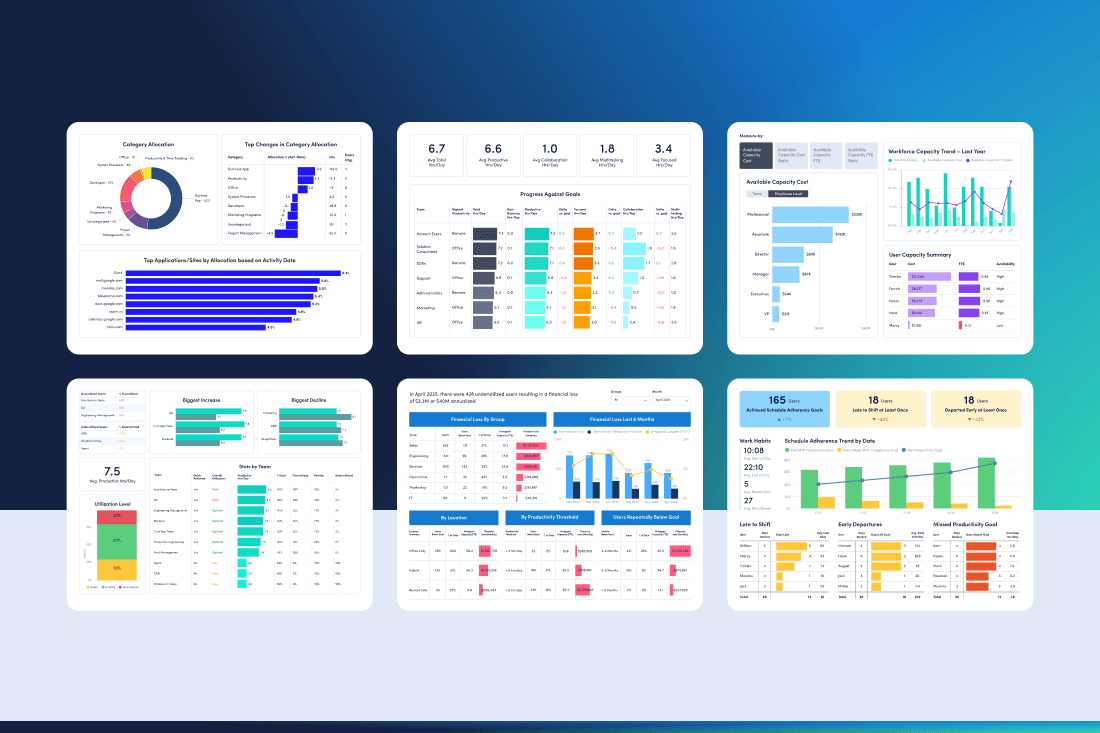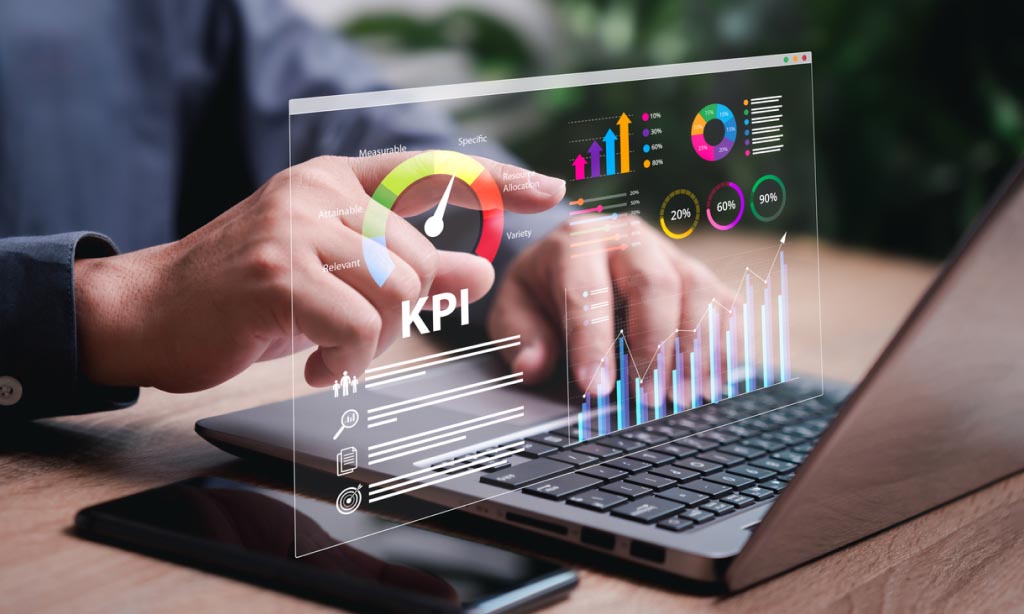Time tracking has moved from a payroll or invoicing function to a cornerstone of business success. With time tracking data, organizations are better equipped to track schedule adherence and enjoy other benefits such as improved productivity, identifying hidden costs and more.
In this post, we’ll discuss why time tracking is important for understanding schedule adherence and other reasons.
Why is time tracking in organizations important?
The benefits of tracking time apply to both employees and employers. If you’re on the fence about whether to track time in your organization, here are some of the top reasons to consider.
1. Understand schedule adherence
Schedule adherence is a crucial metric for businesses that compares how employees are scheduled to work versus how they actually spend that time. At a basic level, schedule adherence will tell you how many hours an employee worked compared to how much time they were scheduled to work. For example, if an employee was scheduled to work eight hours, but arrived 30 minutes late and left 30 minutes early — it would indicate a problem adhering to the assigned schedule.
Implementing even a basic time tracking solution, like one that uses a clock-in and clock-out system, will help organizations uncover schedule adherence issues. However, more advanced tools like ActivTrak’s workforce analytics software can offer deeper insights by monitoring employee activity while they’re working. For example, the software can help you see if employees are working on a different task than what they’re scheduled for, or if they’re frequently switching between tasks rather than focusing on them one at a time. This could indicate a more complicated issue with schedule adherence that a clock-in system wouldn’t catch, such as an employee being given too much work or conflicting priorities.
All of this is to say that time tracking will help you understand schedule adherence, but know that some solutions offer more insights than others.
2. Improve productivity
Time tracking boosts productivity both for individuals and the organization as a whole. With accurate time tracking, teams can easily see which projects or tasks take the most time or when projects are most commonly stalled. Using this data, managers can set more realistic expectations, know when to schedule meetings or help employees find better ways to manage their time which can all boost productivity.
3. Encourage transparency and accountability
When organizations track employee time, it’s easier to see what tasks are completed on time and where bottlenecks may occur. This level of transparency and accountability encourages employees to ask for help if they notice certain tasks take more time than expected or if the deadline isn’t realistic. It also equips managers to have informed discussions with employees if they see an uptick in missed deadlines. They can also intervene if they notice an employee may be overworked or headed toward burnout.
4. Identify hidden costs
Time tracking can help companies uncover hidden costs, easily making up for the cost of a solution. For example, tracking time may reveal if employees are spending excessive time on manual, repetitive tasks that could potentially be automated to reduce costs. Furthermore, you may discover employees are spending too much time working on a single project or client, reducing profit margins or even losing money for the organization.
5. Greater compliance
Many industries require accurate time tracking to comply with local, state or federal laws. For example, government agencies, hospitals or industrial manufacturing companies must keep accurate logs of employee time or face steep fines. Time tracking increases compliance by reducing inaccurate timesheets or the risk of time theft. It also tracks overtime more accurately, which is essential for organizations that hire contractors. Additionally, good time tracking tools make it easier to produce audit reports as required.
6. Assess workforce capacity
Advanced time tracking solutions can show leaders insights about workforce capacity, including who may be underutilized or who has availability to take on more work. Managers can quickly reassign workers to more important tasks as project needs dictate and balance workloads to protect workers from burnout. This data also contributes to better long-term project planning.
7. Know when to increase headcount
As you look to scale your organization by taking on new projects or increasing production, time tracking provides data to make informed decisions about when to add employees. Understanding capacity through insights offered by time tracking tools can help you know when a new full-time employee role is necessary compared to when team members with extra capacity can be reassigned to balance workloads. Time tracking data also shows when a contracting position might make more sense to fill in gaps where a full-time employee wouldn’t be necessary.
8. Forecast with greater accuracy
By tracking time, organizations can see how long employees spend on projects which can help estimate how long similar projects will take in the future. Tracking time also informs forecasting models for unexpected changes in your workforce, industry or outside economic factors to keep the organization prepared for anything.
9. Conduct more effective employee performance reviews
Managers need data to review employee performance. Time tracking shows an employee’s value to a company in numbers, including billable hours and time spent on thankless tasks. Using this information, managers can make a case for merit-based pay increases or increased responsibility. They can also have more productive conversations about underperformance or disengagement.
Potential downsides of time tracking
Although time tracking provides numerous benefits in today’s corporate environment, there are some potential drawbacks to consider before choosing a solution. Understanding these potential issues before you choose a solution can help you find one that avoids or minimizes them.
Employee resistance to monitoring
Employees may not be enthusiastic about time tracking, so it’s important to communicate why and how you’re implementing it. According to the American Psychological Association, 56% of employees who are monitored at work feel tense or stressed out. Employees being asked to track their time may feel that their employer doesn’t trust them, which can lead to stress and turnover.
Leaders and managers need to communicate clearly why the organization is implementing time tracking and exactly what is being tracked. Employees who understand the benefits of time tracking are much more likely to adopt the process and take advantage of time tracking tools available for them. For example, ActivTrak provides a Personal Insights Dashboard that shows them how they spend their time at work, including where they could improve. This kind of transparency empowers employee accountability rather than paranoia.
ActivTrak Personal Insights Dashboard:

Increased urge to micromanage
Employee time tracking may also play a role in micromanagement. When managers can see minute details of an employee’s daily work, they may feel the need to intervene more in the employee’s tasks. This can erode employee autonomy and morale while also creating friction between managers and employees. Leaders can mitigate this by carefully determining what information is monitored in time tracking and how they can use it, as well as communicating the dangers of micromanagement to managers throughout the organization.
Security and data concerns
Invasive time tracking is also a data and privacy concern. Choosing the right time tracking solution includes ensuring employee information is safe, secure and fully private. For example, ActivTrak does not log keystrokes, monitor emails, access cameras, monitor personal devices or record video. The organization should also set clear policies on what data is collected and how when it comes to time tracking.
Adding extra work or inaccurate data
The wrong time tracker can add more work to your employees’ busy days or introduce inaccuracies to your time tracking data. If employees have to remember to clock in or out, assign work hours to specific tasks or track time spent on unimportant work (like, say, time tracking), there’s a much higher chance that your data will be incorrect. To avoid this, consider using an automated time tracking solution to increase accuracy without adding more work to employees’ plates.
Automatically track time with ActivTrak
When it comes to time tracking, don’t settle for a basic solution like a clock-in and clock-out system. ActivTrak’s workforce analytics software can help you understand schedule adherence and enjoy the other benefits we’ve mentioned through deeper insights. Identify bottlenecks to boost productivity and uncover hidden costs to improve your bottom line. Unlike a traditional clock-in and clock-out system, ours will track time spent on tasks automatically which means you get more accurate data without asking employees to manually take on time tracking.
Contact our sales team today to see how ActivTrak can take your business’s time tracking to the next level.




